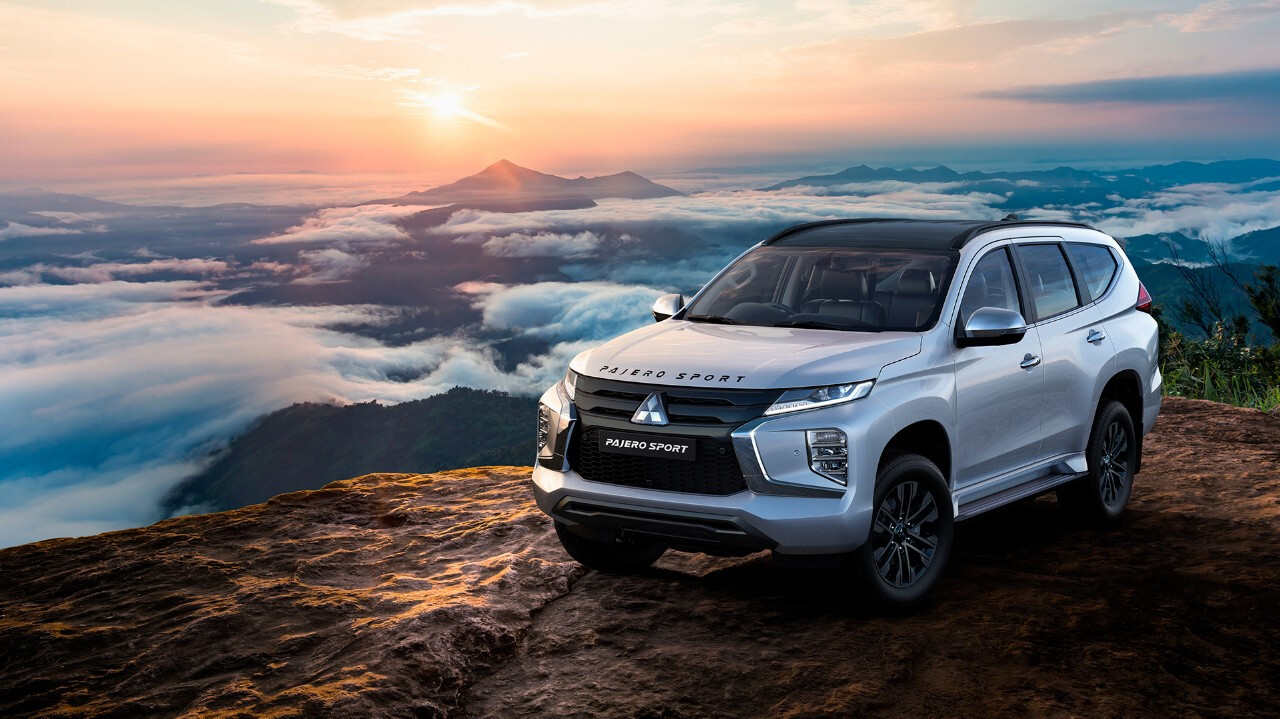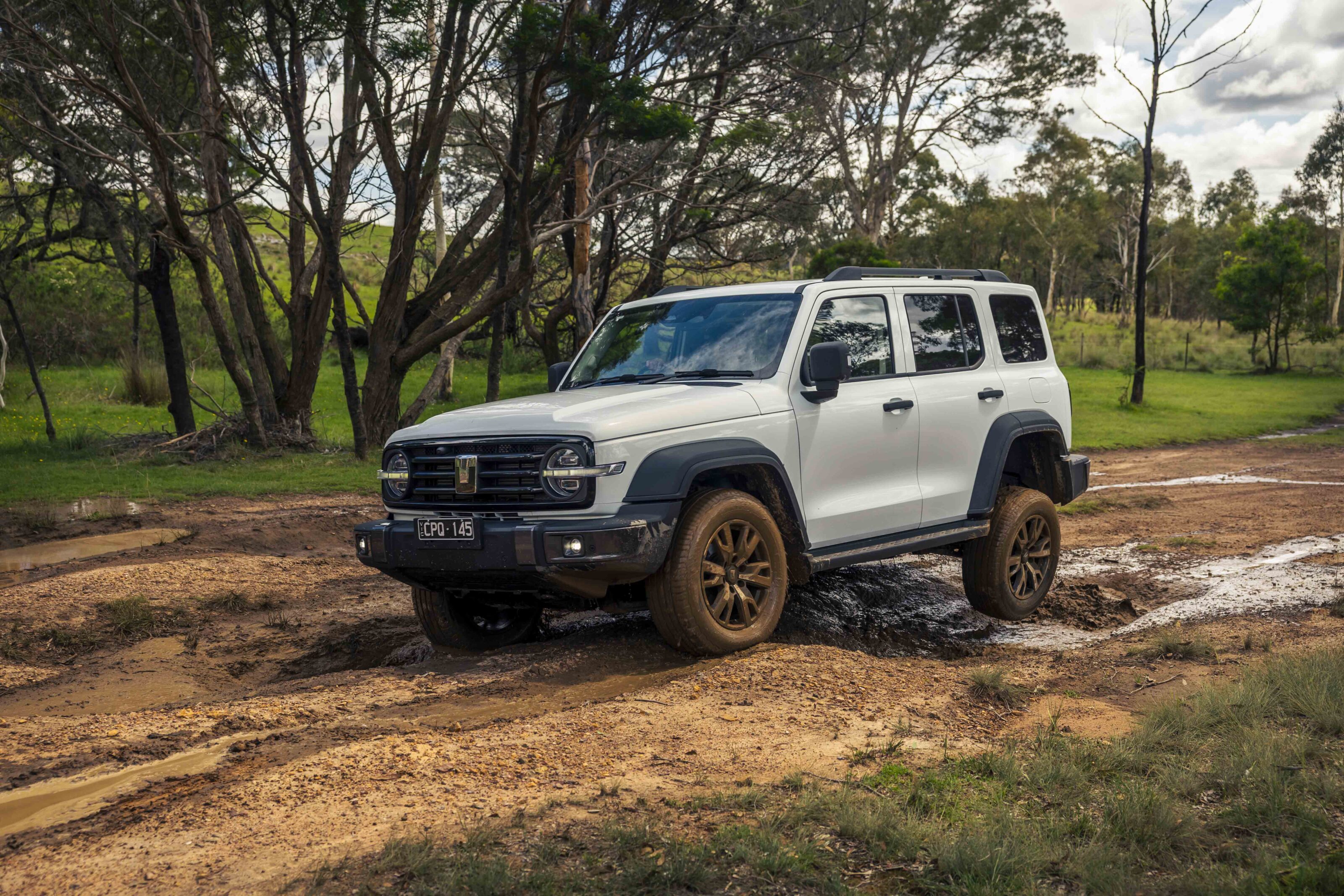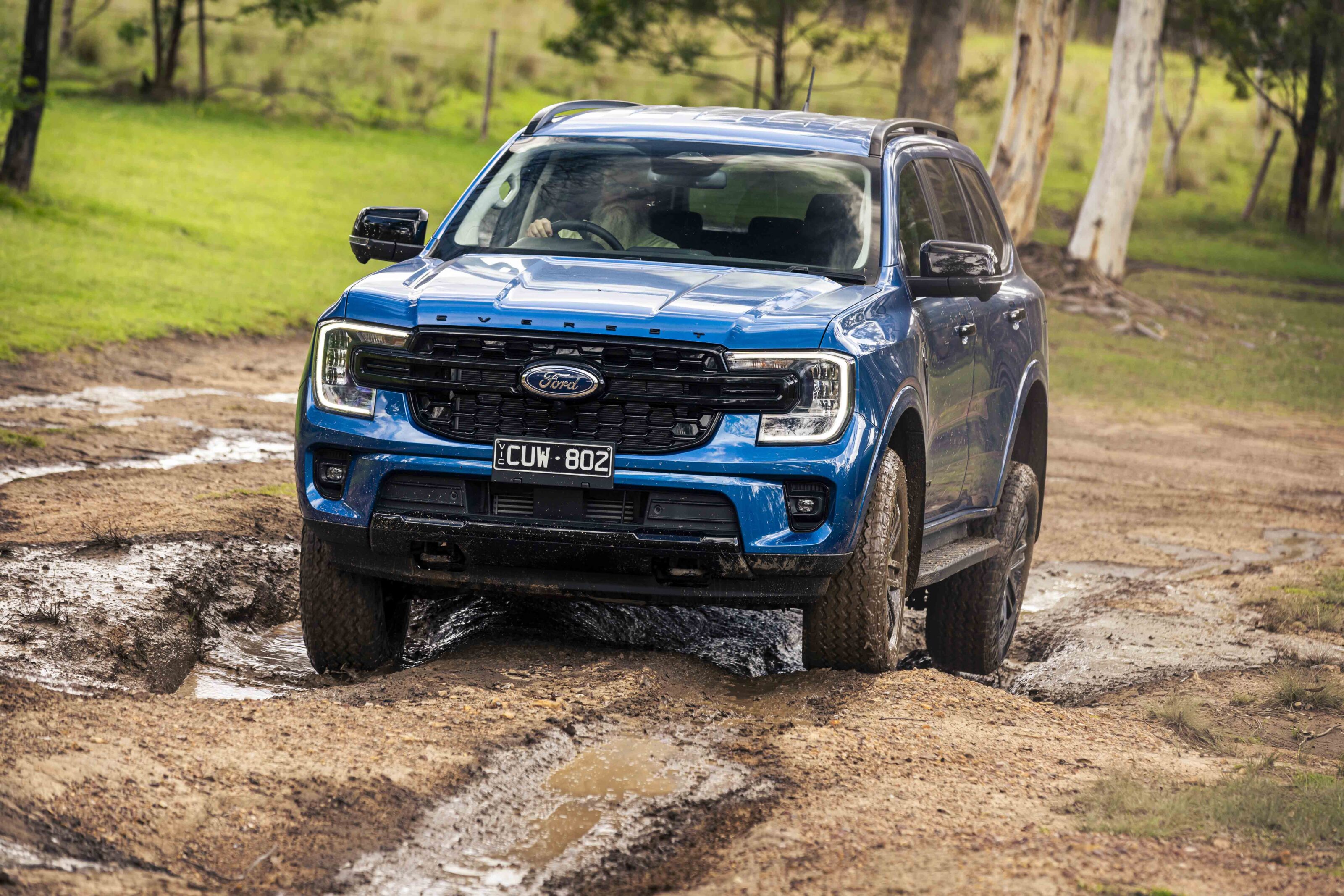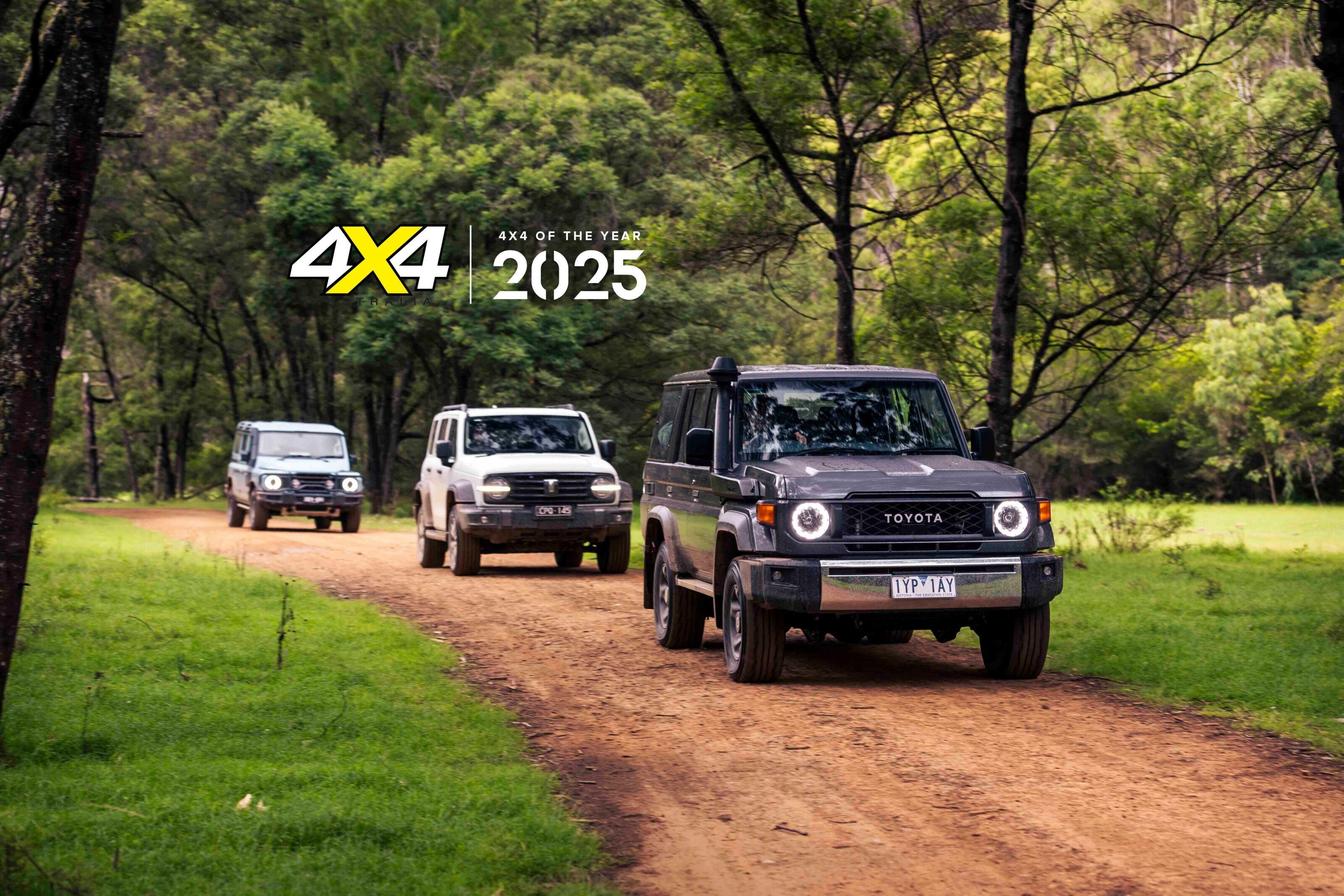Score breakdown
Things we like
- Compelling price tag
- Comfortable long-distance hauler
- Oodles of space
- 10-year warranty
Not so much
- Outdated interior
- Road tyres to be ditched
- Engine NVH
As one of a handful of seven-seat SUVs with proper off-road credentials currently on the Australian market, the Pajero Sport remains popular with adventure-driven families.
And for good reason; it’s well-priced and comes with a generous warranty and class-leading after-sales support.
In its current guise though, the Paj Sport was first released back in 2015 and is somewhat long in the tooth – despite a mid-life refresh in 2020 that was largely cosmetic.
With an influx of more modern large SUVs arriving locally – think Everest – is the ageing Pajero Sport still a worthy consideration?
Four 4×4 models occupy the Australian line-up – GLX, GLS, Exceed and GSR – with the choice of either five or seven pews available. The mid-spec GLS we have here is the cheapest entry point in to a seven-seat 4×4 variant.
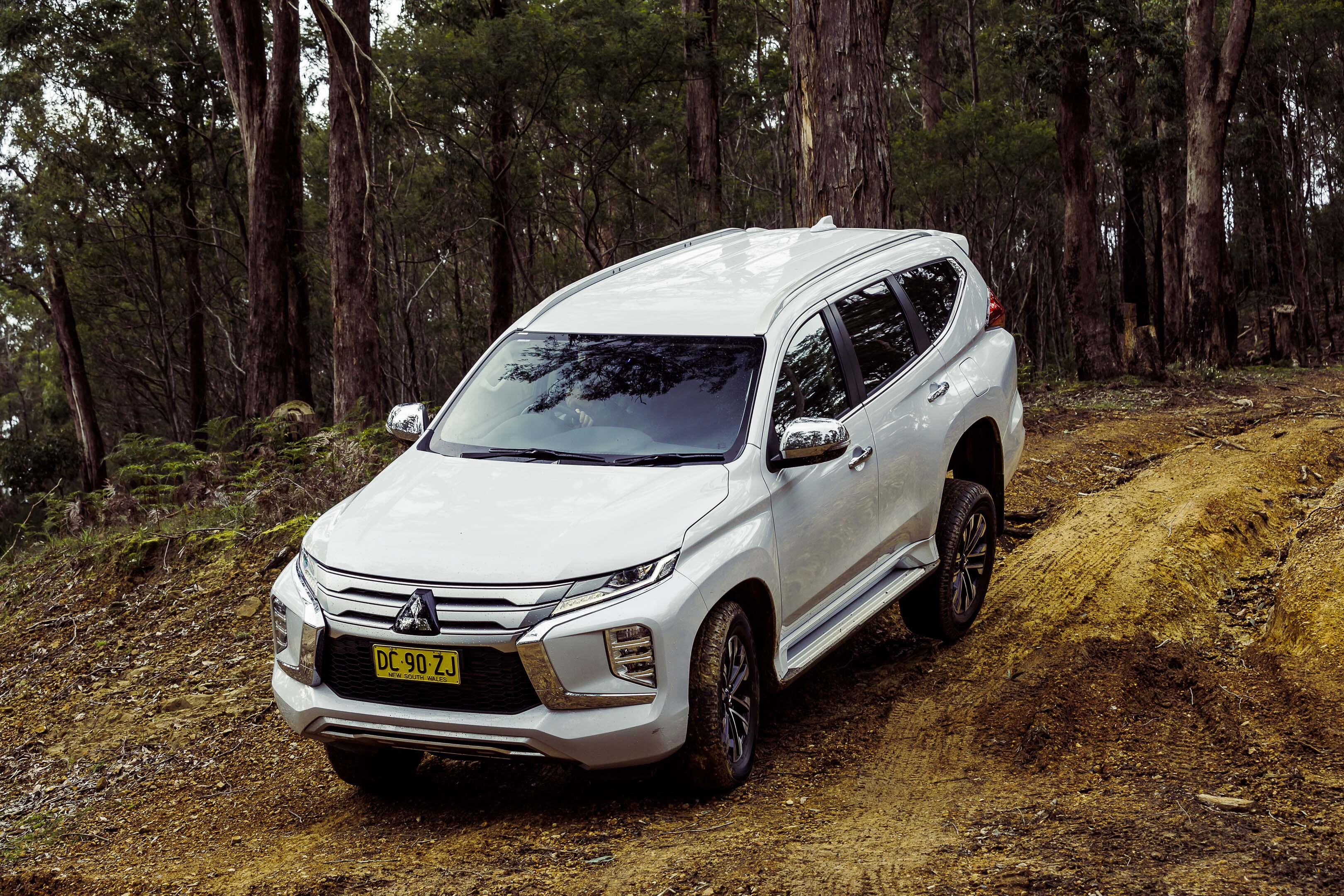
Interior
Despite feeling dated in certain areas, the Pajero Sport’s interior is a comfortable place for a family voyage beyond the black stump.
The undersized eight-inch touchscreen now feels a generation old, with the system itself slow to boot by modern standards.
TomTom navigation is embedded within the system, but, with the inclusion of Apple CarPlay and Android Auto, we’re hard-pressed to know if anyone will ever use it. Still, the most commonly used applications and functions are easy to find.
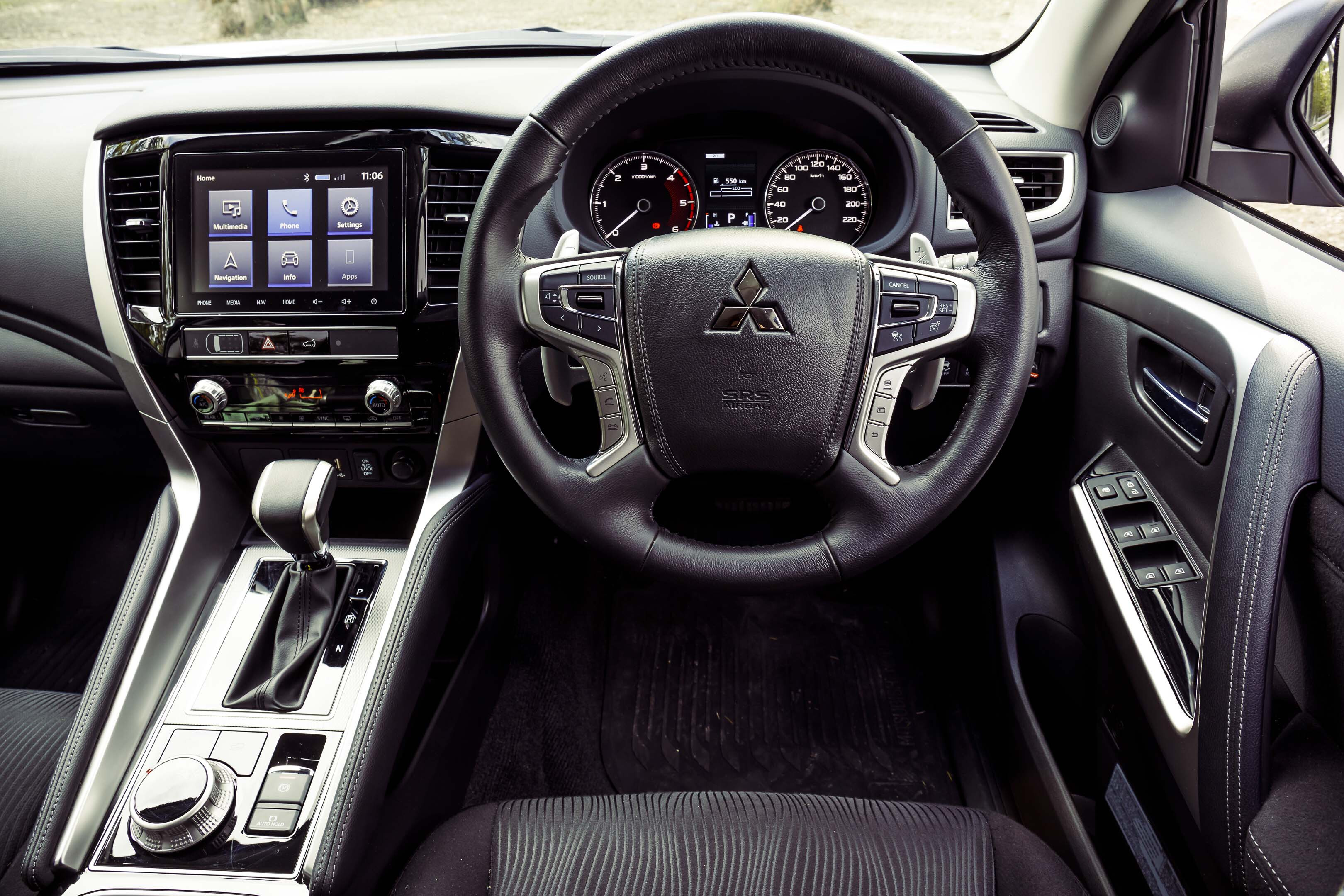
Broken record here, but the on-screen touch buttons instead of ‘actual’ buttons and dials is an ongoing gripe we have here at 4X4 Australia – especially for volume control. Not only is there a delay when pressing the buttons, but the screen doesn’t take long to get filthy with fingerprints.
An updated UI, a bigger screen, and buttons and dials would make a world of difference.
Front passengers are greeted with two USB points, one HDMI point and a 12-volt outlet; those in the rear seat get two USB points and a 150W outlet; while the third row has one 12-volt outlet.
Grab handles for the driver and front and rear passengers make entry and exit easy for weary travellers, and, unlike the base-spec GLX, the GLS comes with dual-zone climate control.
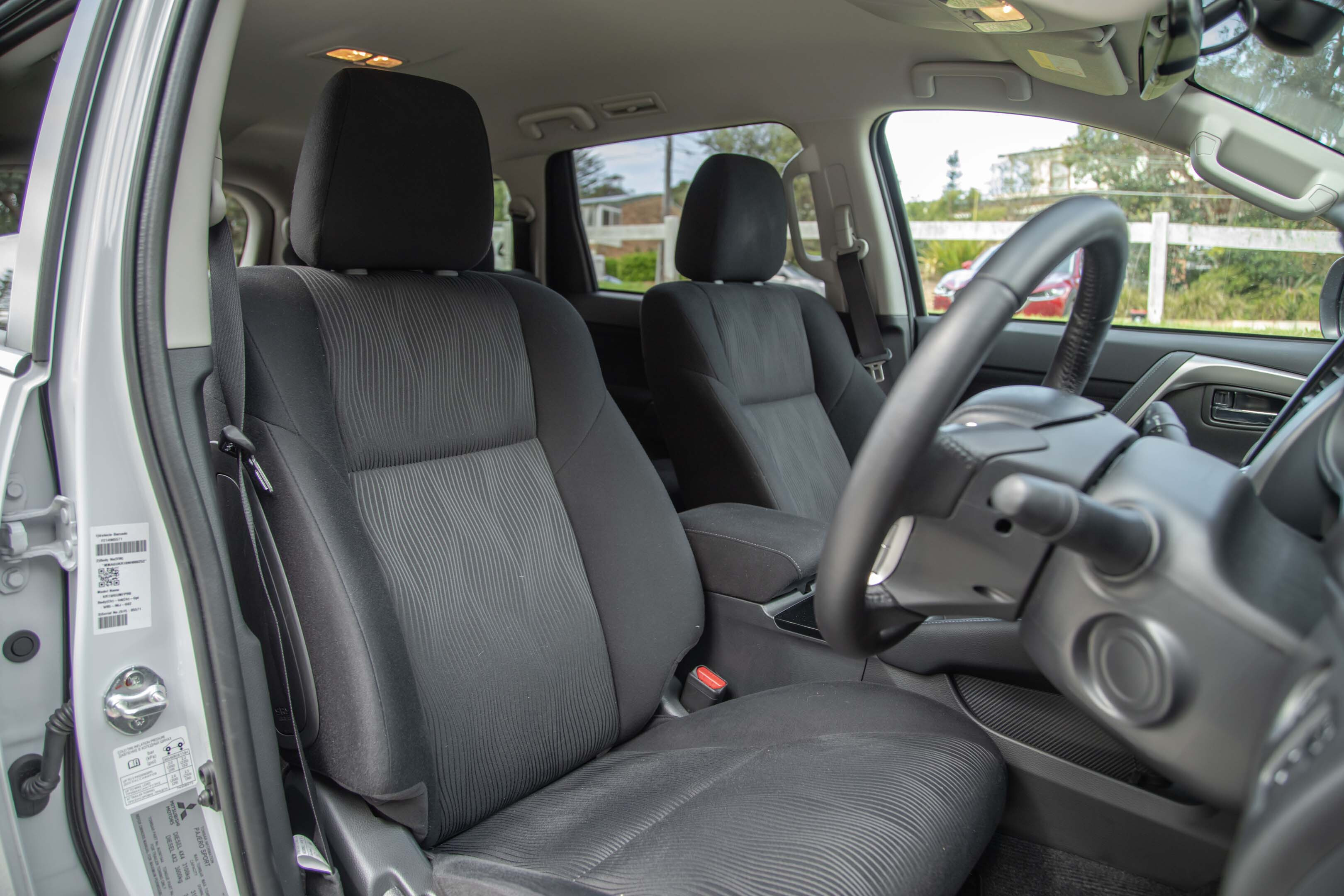
The cloth-trimmed seats are supportive and comfortable, and there’s plenty of head- and leg-room in the second row. Owners will have to manually adjust the front seating positions, though – ticking the ‘Deluxe’ option at purchase time will ensure you get leather-appointed powered seats, as well as Mitsubishi’s Multi-Around Monitor system.
The third row is a little bit cramped, but smaller kids will be comfortable on longer trips.
That third row can be easily stowed to allow for greater luggage capacity, and the boot can eat up to 502 litres of space when rear-most seats are folded down. Folding all of the seats opens up 1488 litres and ample space: 1575mm (L) x 1370mm (W) x 885mm (H).
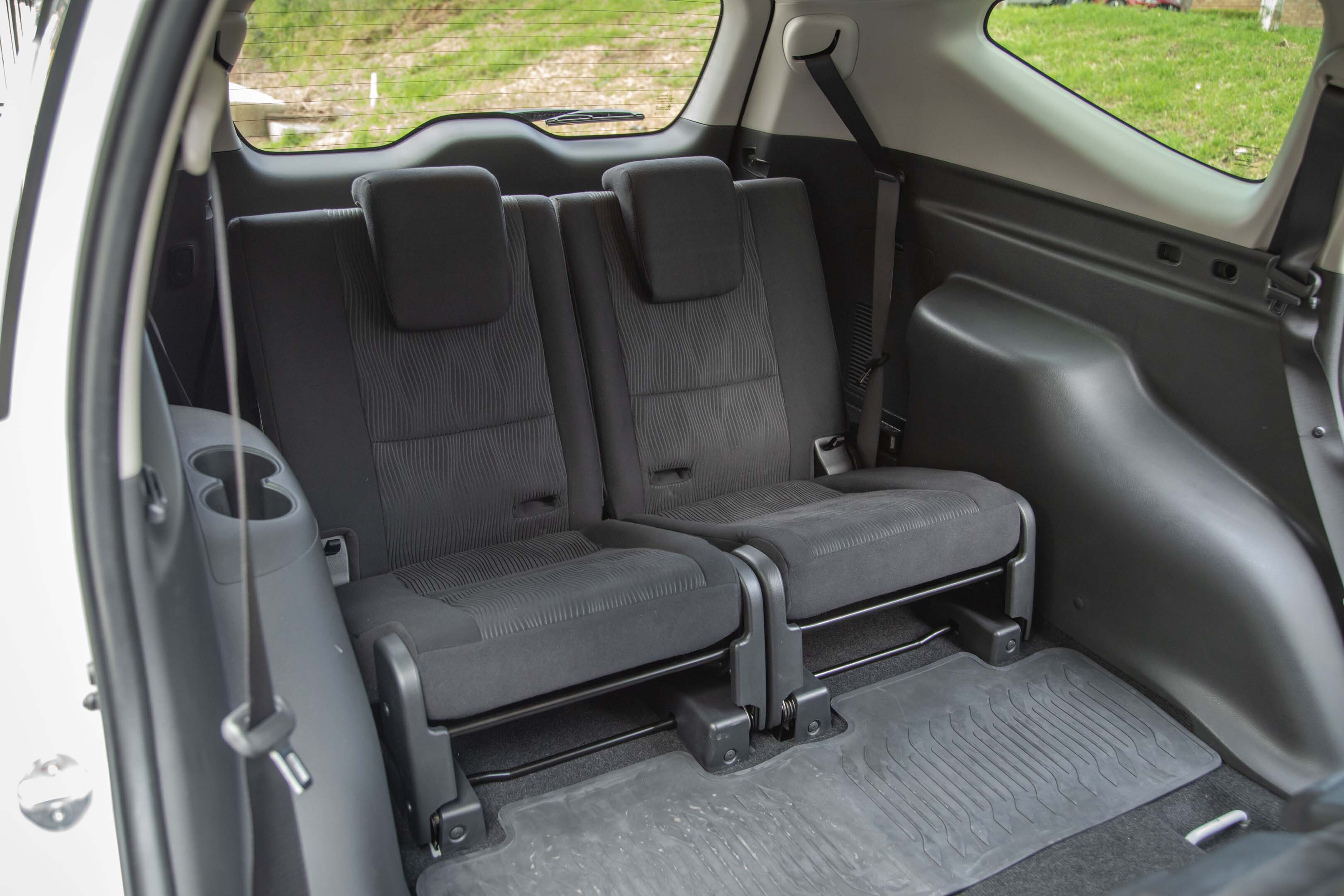
The GLS comes with a payload capacity of just 715kg. A plastic cover protects the carpet when the seats are flat, but the bumpy plastic provides an uneven surface and items do slide around because of this.
There’s no shortage of storage bins and pockets, which are neatly positioned within the cabin, including the clever use of otherwise wasted space beneath the centre console.
Two drink holders sit between the driver and passenger, while big pockets in doors are a snug fit for larger items. The GLS model also features a handy rear floor storage compartment.
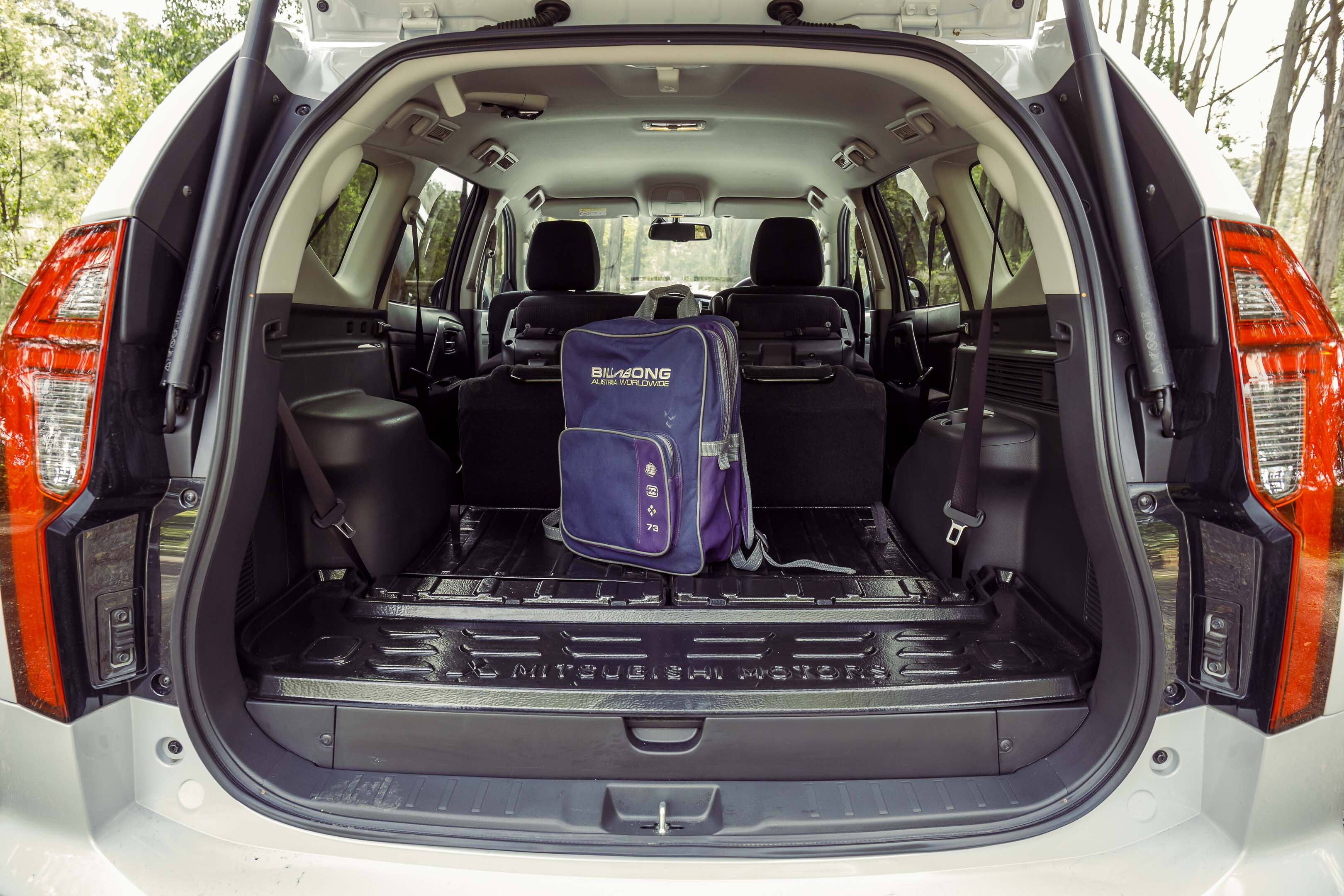
Exterior
The revamped front end of the Pajero Sport was implemented as part of the vehicle’s mid-life update in 2020. Much like the changes to the Triton the year previously, the Pajero Sport received the same ‘Dynamic Shield’ design concept for a wider, bolder front end.
The facelift was essential to bring the Pajero Sport in to the current century, but, much like the Triton, it could do with slightly less chrome. The design of the rear lights remains a point of conjecture, with the tear-drop style remaining a divisive talking point.
A powered tailgate was also added with the 2020 mid-life update, and we must’ve had a glitchy unit, as it was a temperamental piece of tech. Please comment below if you have had a similar experience?
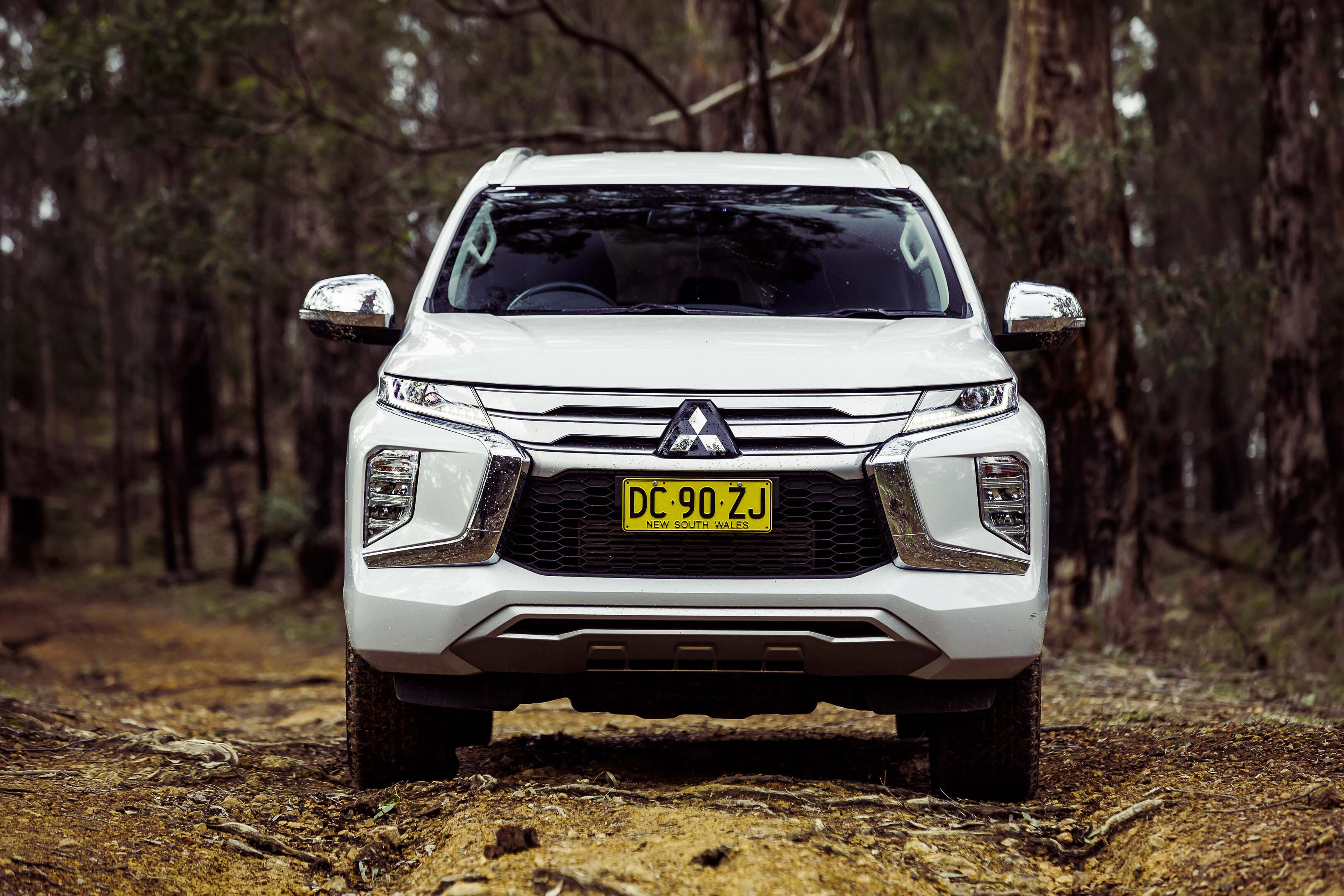
On the road, and off
As one of the few seven-seat SUVs on the market with proper 4×4 credentials, an all-terrain set of boots would transform the Pajero Sport into an off-road-ready weapon.
With a modest 133kW and 430Nm on tap, there’s no disguising the fact Mitsubishi’s 2.4-litre MIVEC DID turbo-diesel engine seems to work hard to get the 2060kg Pajero Sport up to speed.
It’s also not the quietest nor smoothest in its operation, but once sitting at 100 clicks on the freeway, the burly SUV is a pleasant place to sit.
Like others in this category, the Pajero Sport utilises a ladder-frame chassis derived from its ute-based sibling, but it replaces the leaf springs found at the rear of the Triton with coils – the front-end shares the same coil design. This translates to a much smoother on-road composure than the Triton ute.
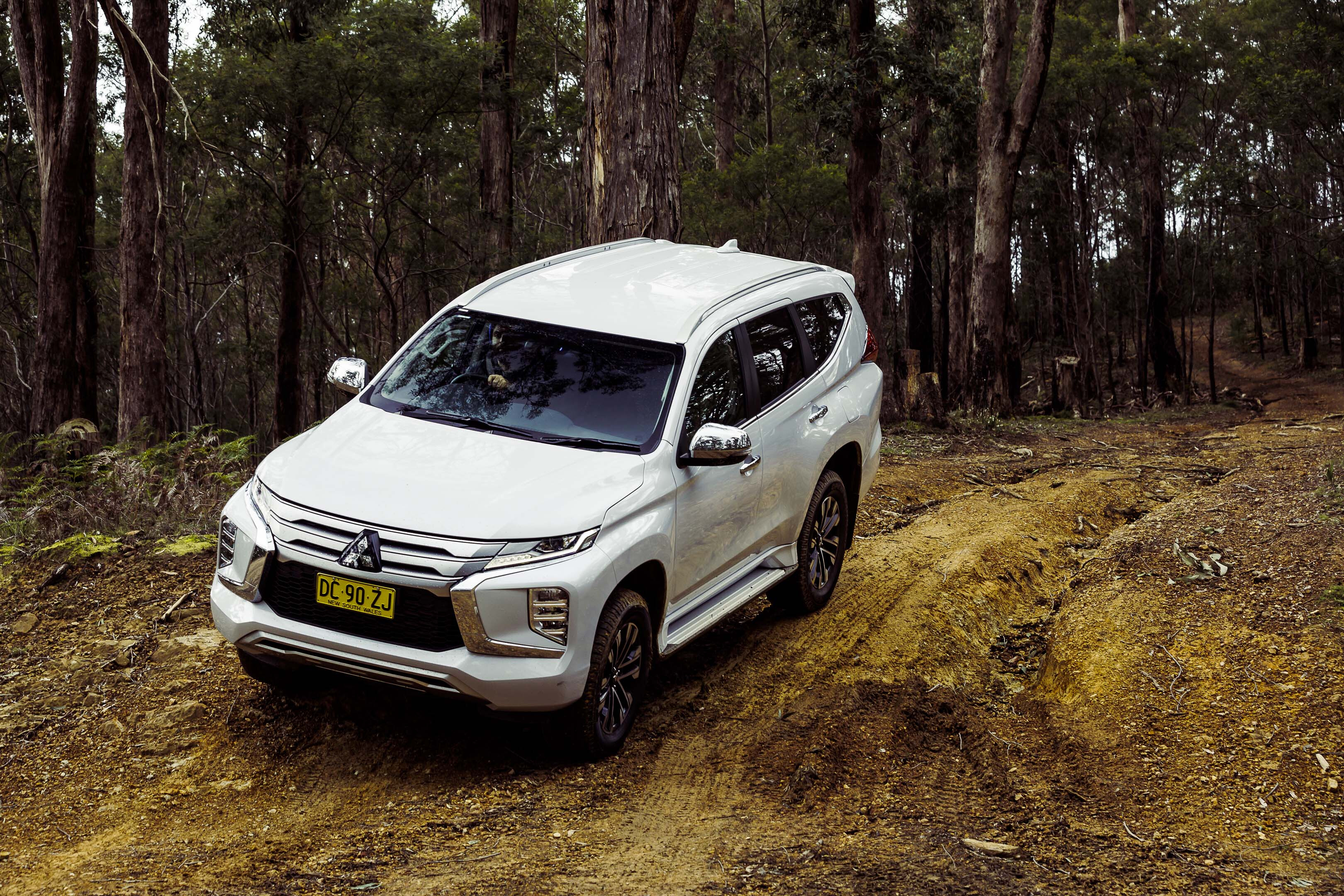
The eight-speed transmission is well-calibrated, with up- and down-changes fairly smooth by large SUV standards. The GLS 4×4 is equipped with paddle shifters, which is convenient for when bitumen turns to dirt.
Wearing 265/60 RE Open Country Toyo A32 road tyres and 18-inch two-tone alloys limited the amount of off-roading we could enjoy, but we did enjoy a spirited yet brief opportunity to flick the on-demand 4×4 system – Super Select II – in to 4WD Low.
The eight-speed transmission is well-calibrated, with up- and down-changes fairly smooth by large SUV standards.
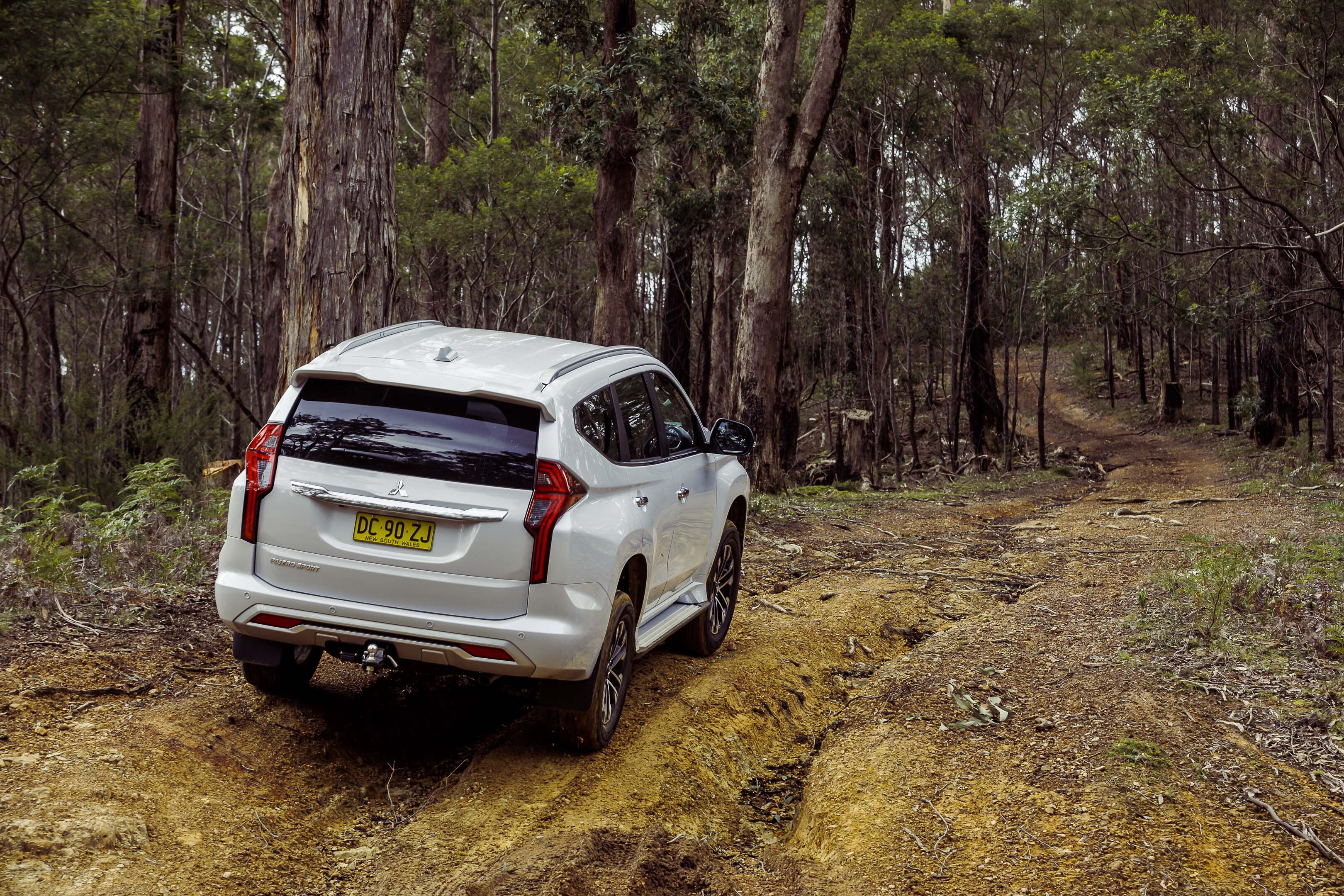
As one of the few seven-seat SUVs on the market with proper 4×4 credentials, an all-terrain set of boots would transform the Pajero Sport into an off-road-ready weapon.
Once we started to slip and slide on those road tyres, though, we opted to return to the bitumen so that we could deliver the vehicle to Mitsubishi HQ with its side-steps intact. With that in mind, the driver-selectable rear diff lock which comes standard remained unused on this occasion.
At the end of 2022, the Pajero Sport GLS received a Tyre Pressure Monitoring System (TPMS) as standard, which provides the driver with upt-to-date tyre pressure information and is a feature that should be standard on all 4×4 vehicles.
For caravan owners, the GLS 4×4 comes with a REDARC trailer control system.
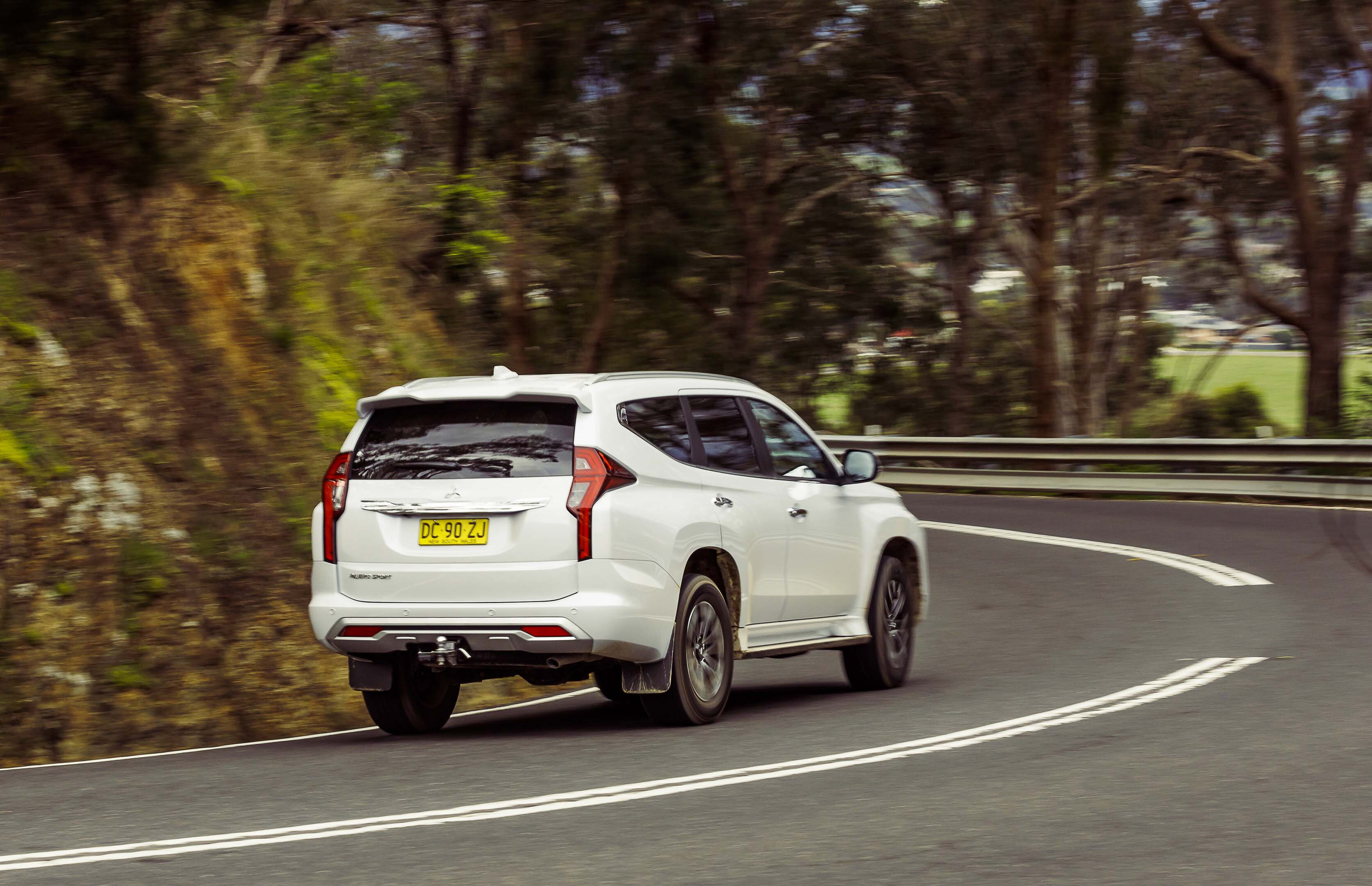
Safety
The Pajero Sport carries a five-star ANCAP safety rating, awarded in 2015 under a less strict regime than that used today.
However, Mitsubishi has not rested on its laurels. As part of a 2020 upgrade, the Pajero Sport added Lane Change Assist (LCA) and Rear Cross Traffic Alert (RCTA) – but these are only available as standard on Exceed models.
The GLS does get Electronic Brake Force Distribution (EBD), Emergency Stop Signal system (ESS), and Hill Start Assist and Hill Descent Control.
Safety kit includes
| Forward Collision Mitigation system (FCM) |
| Emergency Stop Signal function (ESS) |
| Emergency Brake Assist system (EBA) |
| Hill Start Assist (HSA) |
| Hill Descent Control (HDC) |
| Active Stability Control (ASC) |
| Trailer Stability Assist (TSA)2 |
| Active Traction Control (ATC) |
| Anti-lock Braking System (ABS) |
| Electronic Brakeforce Distribution (EBD) |
| Brake Override System (BOS) |
| Adaptive Cruise Control (ACC). |
VERDICT
It may have started to show its age, but the Pajero Sport GLS remains a compelling, off-road-ready seven-seat 4×4
The release of the all-new Ford Everest has widened the chasm between it and the rest of the large SUV market, bringing with it unrivalled on-road characteristics. But is there still an argument for the ageing Pajero Sport?
It may have started to show its age, but the Pajero Sport GLS is an off-road-ready seven-seat 4×4, with oodles of space, a decent drivetrain, a competitive price tag of $55,190 (the vehicle received a $1000 price rise in December, 2022), class-leading after-sales support, and a ten-year warranty.
It remains a compelling choice.
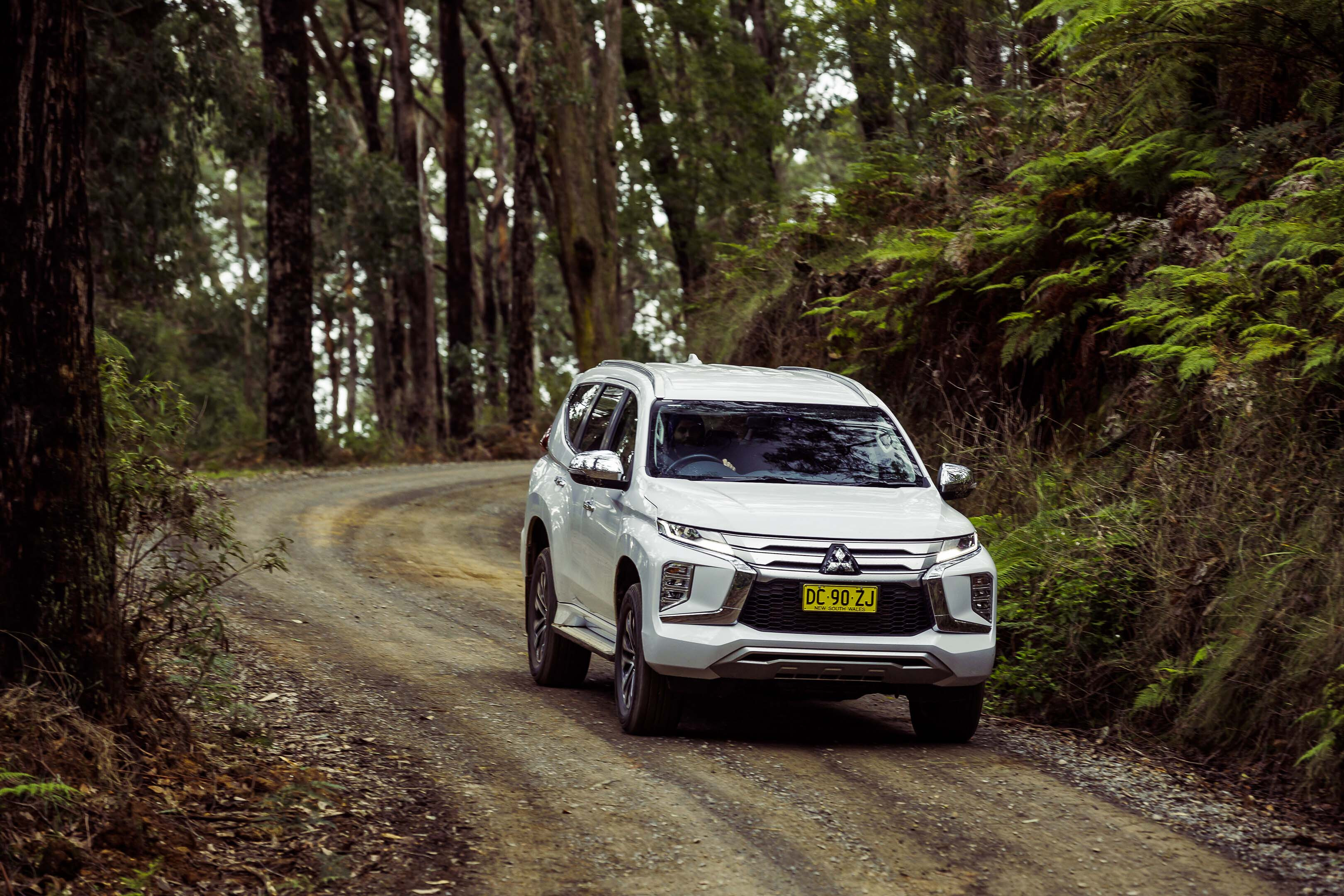
2023 Mitsubishi Pajero Sport GLS 4×4 specs
| Engine | 2.4L I4 turbo-diesel |
|---|---|
| Capacity | 2442cc |
| Transmission | 8-speed automatic |
| Poweru00a0 | 133kW @ 3500 |
| Torque | 430Nm @ 2500 |
| 4×4 system | Part-time 4×4 |
| Front suspension | Double wishbone with coils |
| Rear suspension | 3-link with coils |
| Wheels | 18-inch alloys |
| Kerb weight | 2060kg |
| GVM | 2775kg |
| Payload | 715kg |
| Towing capacity | 3100kg |
| Seating | 7 |
| Fuel tank | 68 |
| ADR fuel claim | 8.0L/100km |
| Wading depth | 700mm |
| Approach angle | 30 |
| Departure angle | 24.2 |
| Rampover angle | 23.1 |
| Ground Clearance | 218mm |
| Price | $55,190 |
Score breakdown
Things we like
- Compelling price tag
- Comfortable long-distance hauler
- Oodles of space
- 10-year warranty
Not so much
- Outdated interior
- Road tyres to be ditched
- Engine NVH




